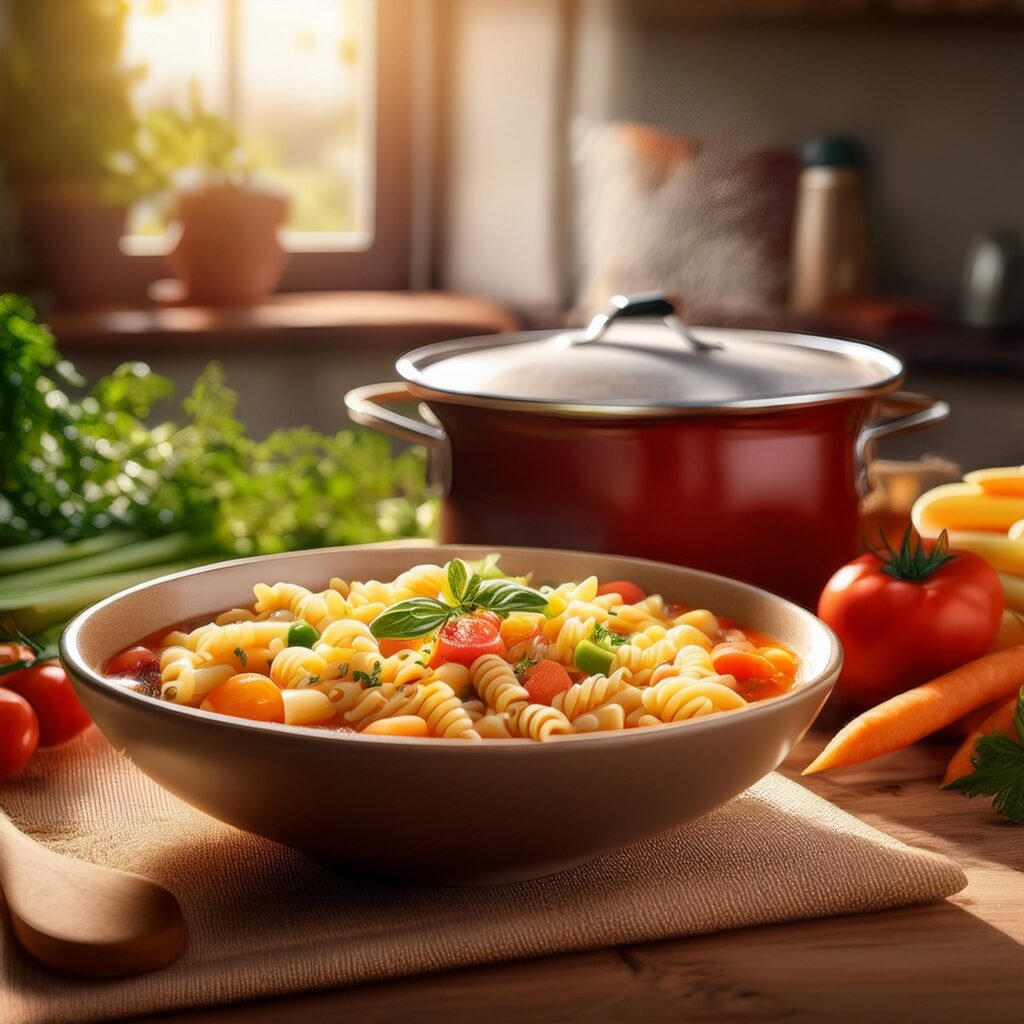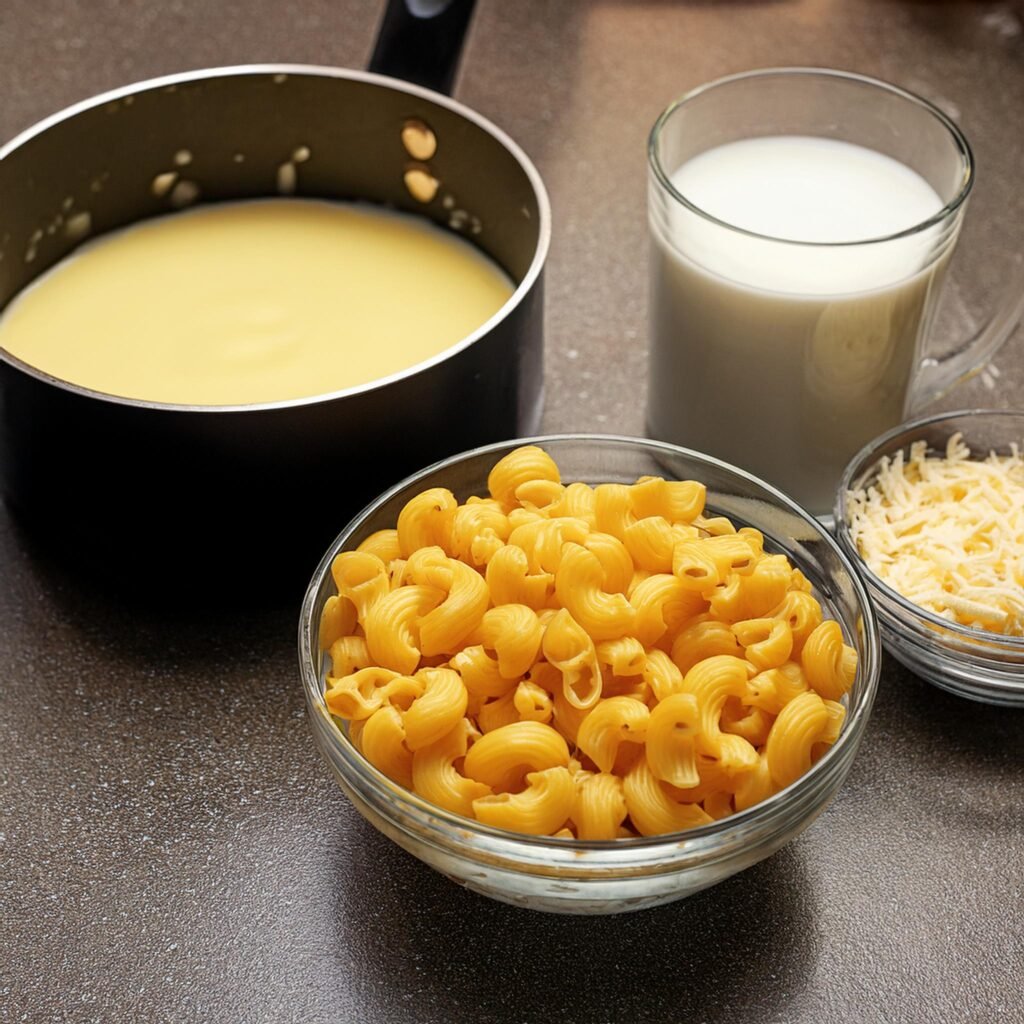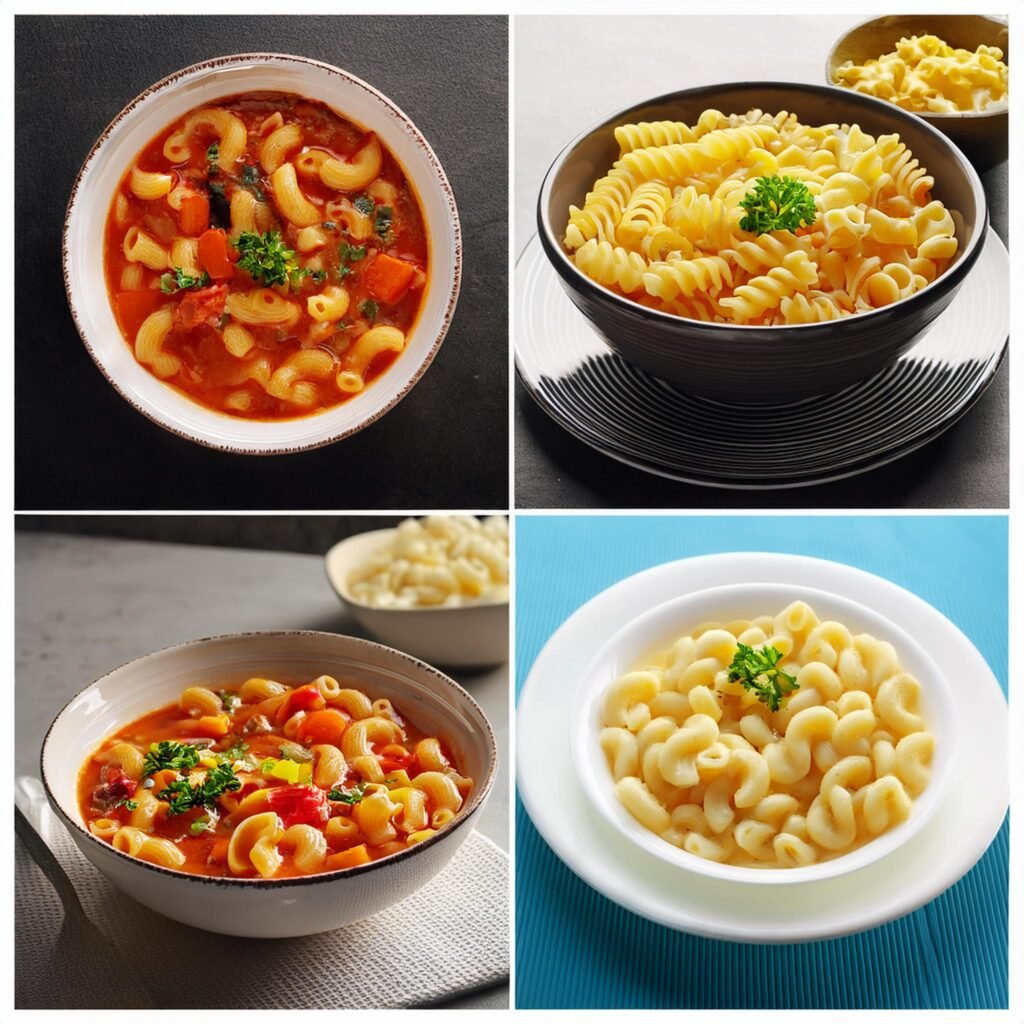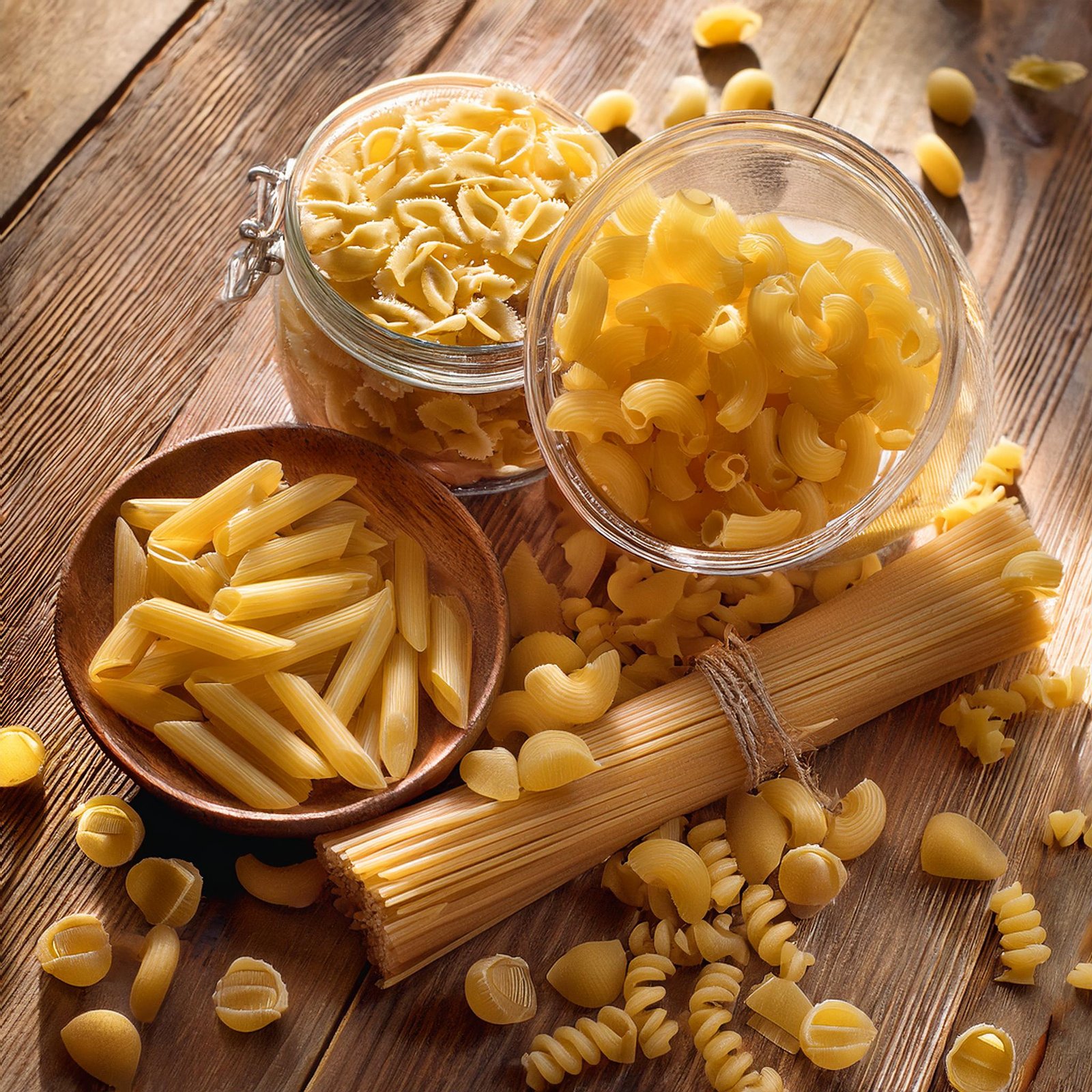Pasta comes in a wide variety of shapes and sizes, each designed to complement specific types of dishes. Among the most popular are ditalini pasta and macaroni, two small, versatile pasta shapes commonly used in soups, salads, and casseroles. Despite their similarities, these two pasta types have unique characteristics that make them suitable for different recipes.
So, is ditalini pasta the same as macaroni? While they share some similarities, ditalini and macaroni have distinct shapes, textures, and culinary applications. Understanding these differences can help you choose the right pasta for your next meal.
In this article, we’ll explore the definitions, characteristics, and best uses for both ditalini and macaroni, ensuring you get the perfect result every time you cook.
What Is Ditalini Pasta?

Ditalini pasta, often referred to as “little thimbles,” is a small tube-shaped pasta with a rich history rooted in Italian cuisine. Its name comes from the Italian word “ditale,” meaning “thimble,” which perfectly describes its short, cylindrical shape.
Characteristics of Ditalini Pasta
Shape and Size
Ditalini is a small, straight pasta tube with a smooth or slightly ridged surface. Its compact size makes it ideal for dishes where small, uniform pieces of pasta are desired.
Texture
Ditalini’s smooth texture allows it to blend seamlessly with sauces and broths, while the ridged versions can better hold thicker sauces or dressings.
Cooking Time
Ditalini cooks quickly, usually in about 7–9 minutes, depending on the brand and whether it’s made from regular or whole-grain flour.
Common Uses of Ditalini
Soups and Stews
Ditalini is a favorite in soups, particularly in Minestrone or Pasta e Fagioli, where its small size complements vegetables and beans.
Pasta Salads
Its bite-sized shape makes ditalini perfect for pasta salads, as it mixes easily with other ingredients like vegetables, meats, and dressings.
Side Dishes
Ditalini pairs well with creamy sauces and can be used as a side dish, often tossed with cheese, butter, or olive oil.
History and Origins of Ditalini and Macaroni
Understanding the history of these pasta types provides insight into their cultural significance and traditional uses.
Origins of Ditalini
Regional Roots
Ditalini originates from Southern Italy, where it was traditionally used in hearty soups and stews. Its compact size made it perfect for stretching ingredients in rural kitchens, offering a filling addition to vegetable-based dishes.
Cultural Significance
In Italian cuisine, ditalini is often associated with peasant cooking, highlighting the ingenuity of making simple ingredients shine. Today, it remains a favorite for authentic Italian recipes like Pasta e Fagioli.
Origins of Macaroni
Italian Influence
Macaroni has roots in Italian cuisine, particularly in the Naples region, where its elbow shape became popular for holding rich sauces. Its name derives from the Italian word “maccheroni,” which refers to a broad category of pasta shapes.
Adoption in Other Cultures
Macaroni gained global recognition through American dishes like macaroni and cheese, becoming a household staple in comfort food recipes worldwide. Its versatility made it an enduring favorite in many cuisines.
Nutritional Comparison of Ditalini and Macaroni
For health-conscious cooks, knowing the nutritional differences between these pasta types can help in meal planning.
Calories and Carbohydrates
- Ditalini: A 2-ounce serving of ditalini contains approximately 200 calories and 42 grams of carbohydrates, making it a great energy source.
- Macaroni: Similar in calories and carbohydrates, macaroni also provides about 200 calories and 40–42 grams of carbohydrates per 2-ounce serving.
Fiber and Protein
Both pasta types contain small amounts of dietary fiber and protein, though whole-grain versions offer higher fiber content.
- Ditalini (Regular): ~2 grams of fiber and ~7 grams of protein per serving.
- Macaroni (Regular): ~2 grams of fiber and ~7 grams of protein per serving.
Nutritional Enhancements
To boost nutrition, consider:
- Whole-Grain Pasta: Provides more fiber and nutrients.
- Vegetable-Based Pasta: Made from ingredients like lentils or chickpeas, offering higher protein and fiber.
Fun Facts About Ditalini and Macaroni
Here are some interesting tidbits about these beloved pasta types:
- Ditalini: Known as “pastina” (little pasta) in some regions of Italy, it is commonly given to children in soups.
- Macaroni: It was one of the first pasta shapes to gain widespread popularity in the United States, introduced by Italian immigrants in the 19th century.
- Versatility: Both ditalini and macaroni are staples in pantries worldwide due to their adaptability in various cuisines.
What Is Macaroni?

Macaroni, one of the most recognizable pasta shapes, is a staple in many households and is often synonymous with comfort food. Its iconic curved shape and versatility make it a favorite for a variety of dishes.
Characteristics of Macaroni
Shape and Size
Macaroni is an elbow-shaped pasta that’s slightly larger than ditalini. Its curve gives it a unique texture and appearance that works well in both baked and stovetop dishes.
Texture
Most macaroni has a smooth surface, though some varieties are ridged to better hold sauces. Its structure is sturdier than ditalini, making it a good choice for baked recipes.
Cooking Time
Macaroni typically cooks in about 8–10 minutes, slightly longer than ditalini due to its thicker structure.
Common Uses of Macaroni
Mac and Cheese
Macaroni is the classic choice for creamy, cheesy dishes like mac and cheese, where its shape holds the sauce perfectly.
Baked Casseroles
Its sturdiness makes macaroni ideal for baked dishes like casseroles or pasta bakes, as it holds its shape well under heat.
Pasta Salads
Macaroni is also a popular choice for cold pasta salads, where its curve adds texture and visual appeal.
With a clear understanding of ditalini and macaroni, we can now compare their similarities and differences to determine when to use each in your recipes.
Is Ditalini Pasta the Same as Macaroni?
While ditalini and macaroni are both small, tube-shaped pasta types, they are not the same. Each has unique characteristics that set them apart and make them better suited for specific culinary applications.
Shape Comparison
Ditalini:
- Straight, short tubes resembling tiny thimbles.
- Smaller in size and more uniform in shape compared to macaroni.
- Available in smooth or ridged varieties.
Macaroni:
- Curved, elbow-like shape that’s slightly larger than ditalini.
- Typically smooth, but ridged versions exist to hold thicker sauces.
The curved shape of macaroni makes it ideal for baked dishes where structure is important, while ditalini’s straight tubes work well in soups or mixed salads where uniformity is desired.
Texture and Cooking Differences
Ditalini:
- Lighter texture, allowing it to blend easily into broths or light sauces.
- Cooks slightly faster than macaroni, making it ideal for quick recipes.
Macaroni:
- Sturdier and more robust, capable of holding its shape in baked or layered dishes.
- Requires slightly more cooking time due to its larger size and thickness.
Uses in Traditional Dishes
Ditalini Recipes:
- Minestrone Soup: Ditalini’s small size ensures it doesn’t overpower the vegetables and broth.
- Pasta e Fagioli: The pasta pairs perfectly with beans, absorbing the flavors of the rich sauce.
- Cold Pasta Salads: Its size and shape allow for even distribution of ingredients and dressings.
Macaroni Recipes:
- Mac and Cheese: The curve of macaroni holds the creamy sauce beautifully, creating a comforting classic.
- Baked Pasta Dishes: Macaroni stands up to baking, maintaining its structure and texture.
- Pasta Salads: Its larger size and curved shape add texture and visual interest to cold dishes.
Key Differences in Culinary Applications
- Soups and Stews: Ditalini is the better choice due to its smaller size and ability to integrate seamlessly with other ingredients.
- Casseroles and Baked Dishes: Macaroni excels here, as its sturdiness and larger shape withstand high temperatures.
- Substitution Considerations: While ditalini and macaroni can sometimes be substituted for one another, their unique shapes may alter the dish’s texture and presentation.
By understanding these differences, you can choose the best pasta type for your recipe, ensuring a delicious and well-balanced result.
When to Use Ditalini vs. Macaroni

Both ditalini and macaroni have distinct advantages in the kitchen, and knowing when to use each can make all the difference in your recipes. Let’s explore which pasta works best for different dishes and how to substitute one for the other.
Best Uses for Ditalini
1. Soups and Stews
Ditalini’s small, uniform shape is perfect for blending into hearty broths, ensuring every spoonful includes pasta.
- Recommended Recipes: Minestrone, Pasta e Fagioli, chicken noodle soup.
2. Pasta Salads
In cold pasta salads, ditalini provides a balanced texture and doesn’t overpower other ingredients.
- Recommended Recipes: Italian pasta salad, tuna pasta salad, or Mediterranean-style dishes.
3. Light Side Dishes
Ditalini works well with simple dressings like olive oil and Parmesan, or with creamy sauces for an easy side dish.
Best Uses for Macaroni
1. Creamy Dishes
Macaroni is the go-to pasta for dishes with rich, creamy sauces, such as macaroni and cheese. Its elbow shape holds sauce beautifully.
- Recommended Recipes: Classic stovetop mac and cheese, baked truffle mac and cheese.
2. Baked Casseroles
Its sturdier structure makes macaroni ideal for oven-baked recipes that require longer cooking times.
- Recommended Recipes: Tuna noodle casserole, baked ziti with macaroni.
3. Cold Pasta Salads
Macaroni’s curved shape adds a fun texture to salads, making it a popular choice for traditional American-style pasta salads.
Substituting Ditalini and Macaroni
In many cases, ditalini and macaroni can be substituted for one another, but consider the following:
- In Soups: Macaroni can replace ditalini, but its larger size and curved shape may dominate the dish.
- In Baked Dishes: Ditalini may not hold up as well as macaroni in casseroles, as its smaller size can become lost in thick layers.
- In Salads: Both work well, but the choice depends on the visual appeal and texture you want to achieve.
Making the Right Choice
If your recipe emphasizes smooth blending and small, uniform pieces, ditalini is the best choice. For recipes requiring a pasta that holds sauces or stands up to baking, macaroni is the clear winner. Understanding these nuances ensures your dishes are as delicious as possible.
FAQs About Is ditalini pasta the same as macaroni?
What pasta is closest to macaroni?
Pasta shapes closest to macaroni include:
Cavatappi: A slightly larger, spiral-shaped pasta with a similar curved design.
Penne: While straight, its tubular shape makes it a suitable alternative in recipes.
Rigatoni: Larger and ridged, it can replace macaroni in hearty baked dishes.
Ziti: A straight, smooth tube pasta that works well in casseroles like baked ziti.
What can I substitute ditalini pasta with?
If you don’t have ditalini, try these substitutes:
Orzo: A rice-shaped pasta that blends well into soups and salads.
Small Elbow Macaroni: Similar size and texture, making it a great alternative.
Tubetti: Slightly longer but similar in shape and ideal for soups.
Small Shells (Conchigliette): A small pasta shape that works well in salads and stews.
What’s the difference between pasta and macaroni?
The term “pasta” refers to all types of noodles made from wheat, water, and sometimes eggs. Macaroni is a specific type of pasta characterized by its small, curved, tubular shape. While all macaroni is pasta, not all pasta is macaroni. Pasta encompasses a wide variety of shapes and styles, such as spaghetti, penne, fusilli, and lasagna.
What is the pasta for macaroni called?
The pasta used for macaroni dishes is often called elbow macaroni, named for its small, curved, tube-like shape resembling an elbow. Elbow macaroni is a versatile pasta shape commonly used in mac and cheese, pasta salads, and baked casseroles.
Suggested Internal Links:
Caprese Pesto Pasta Salad: A Fresh and Flavorful Dish
Links to a recipe that could use ditalini or macaroni, providing inspiration for readers.
Ditalini Recipe: Perfect Pasta for Every Dish
Provides readers with a recipe using ditalini, enriching their understanding of its uses.
What Does Ditalini Mean in Italian?
Offers cultural and historical background about ditalini, enhancing the discussion.
What Pasta Is Closest to Ditalini?
Explores similar pasta types, complementing the topic of ditalini versus macaroni.
What Are the Five Mistakes to Avoid When Making Pasta Salad?
Adds practical advice for preparing pasta dishes, relevant to readers exploring pasta variations.
Conclusion
Ditalini pasta and macaroni are both small, tubular pasta shapes, but they have distinct characteristics that make them suitable for different culinary applications. While ditalini is straight and perfect for soups, stews, and light salads, macaroni’s iconic curved shape excels in creamy dishes, baked casseroles, and hearty pasta salads.
Understanding the differences between these pasta types can help you choose the best option for your recipes. Whether you’re crafting a comforting bowl of mac and cheese or a flavorful Minestrone, both ditalini and macaroni bring their unique appeal to your table.
Discover more mouthwatering recipes on our Web Site ! Stay connected and get inspired by following us on Facebook, Instagram, Pinterest, and Twitter for the latest updates!
